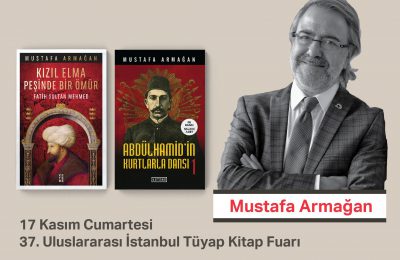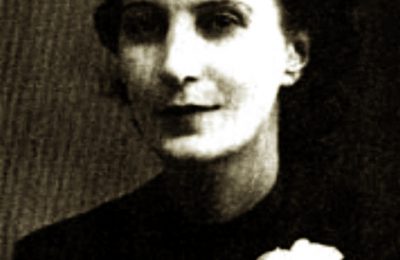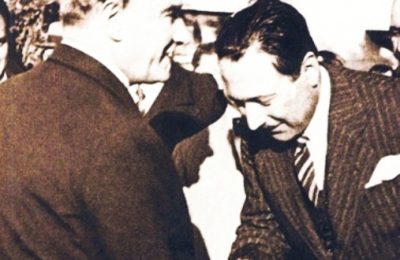THE SPİRİTUAL LİFE OF ISTANBUL
Cemeteries are underground cities… In cemeteries, millions lie underground with the earth drawn up over them like a blanket, while we are buried in the paradox of the city and its deafening roar.
Cities are wells of death; cities are towers of life… That is why, in The City in History, Lewis Mumford, declares that cities owe their foundation to the dead. First of all they laid their dead in the earth and then they took the living and laid them on its surface. The transition to a settled way of life was the work of the dead.
Surely cities are the most imposing of the links that man has forged between life and death. By holding fast to the land, working it and reworking it, we have found in cities a magnificent formula for the formation in the honeycombs of space little islands of fierce resistance to time and to the attrition and pulverisation wrought by the passage of time.
In the city, life displays its potential in everything down to the smallest detail, while death is transformed from biological annihilation and total loss to cultural creation and aesthetic rebirth.
In his highly intelligent biography of London (London: The Biography), Peter Ackroyd presents the Smithfield Meat Market, one of the most obscure corners of the city, as a place where one can find death and life, the sacred and the profane, purity and filth existing side by side. Not far from the site of the market, on a level piece of ground (Smooth-field) where horses used to be sold, stands the great church of St Bartholomew. While the market would be drenched in blood the church would be a model of purity. Furthermore, this is also a place where Protestant and Catholic martyrs used to be burned at the stake and where the carcases of sheep are now dismembered. The same place has seen the complete transformation of the world inhabited by the lambs once known as the “lambs of God”. According to Ackroyd, Smithfield is a veritable London miracle. It is a place where the purest religious environment exists side by side with the dirtiest and bloodiest of activities: life and death, religious devotion and sin, purity and filth.
Another interesting feature is the linkage between urban thoroughfares and the human body in the use of the term “arterial” as applied to roads. Every city has an entrance, an exit, a centre, a navel, a favourite spot, a belly. Of course there are emotions involved; jealousy, for example. In one of his kasides the 17th century Ottoman port Nef’î refers to this particular form of emotion as reflk-i bilâd, the “jealousy” of cities.
Istanbul is a jealous city of this sort, an enfant gaté that has succeeded in directing upon itself the light that once shone in ancient times upon cities such as Troy, Rome, Athens, Cairo and Damascus. The hapless St Euphemia, who left her bones in the damp soil of Kad›köy, no less than Constantine the Great, the founder of the city, are among those who have set their seal on the city’s spiritual essence. Nehmed the Conqueror’s allocation of rooms in the Pantocrator Monastery to an Academy in this city that had been closed for centuries is no less amazing than the way in which the conquest changed the whole structure of the city and added impetus to its development potential.
According to the Armenian writer ‹njijian, who gives us a very colourful picture of 18th century Istanbul, the church of St Nicholas in Faitih was a joint foundation created by Armenians and Latins from the city of Kefe in the Crimea, who also used it jointly as a place of worship. The Latin Catholics worshipped in one section of the church and the Armenians in the other. The connection of the church with the Crimea is so strong that at one time it was allocated to Dominican friars who went back and forth between the two places. But the most surprising thing is that this connection survived into the Ottoman period. After the capture of Kefe, Mehmed the Conqueror had a community brought from there to Istanbul and, strange to say, settled them in this same district. A few centuries later this Crimean Muslim community converted the church into a mesjid, providing an example of the process of Muslimisation.
A similar process is to be found in the allocation to Mevlevi dervishes, during the reign of Mehmed the Conqueror, of Akaleptos Monastery, which had been left without a congregation. According to the Conqueror’s Vakfiyye (deed of trust) the dervishes were to perform the sema to the accompaniment of the ney and recite the verses of Mevlana’s Mesnevi, one of the masterpieces of world literature. This red brick monastery, which for centuries was home to monks and priests, has now opened its doors to members of a different faith, with the sound of the ney replacing the sound of church bells.
But shouldn’t we take a break for a moment from this tiring and arduous journey back into the city’s past and turn to the study of individuals who reflect as in a mirror the whole spiritual atmosphere, even at its most mysterious. Perhaps their lives, which may whisper in our ears from within the spiritual landscape they have created, together with what the Latins have described as genius loci, constitute the only possible way of deciphering the spirit of the place.
It is the life circulating throughout the whole landscape of the city that we shall be attempting to explain. In this context, Istanbul is undeniably a focal centre but, unfortunately, the resentment felt by its children that it has failed to satisfy their hopes makes a very sad story. It is, in a sense, the melancholy life-story of the crazy Ottoman dervish Niyazi-i M›srî, which was inextricably intertwined with the fate of the Empire and also its final dissolution,.
Niyazi-I’s life-story begins in 1617 in a village in Malatya. Murat iV’s capture of Baghdad served to turn his attention towards the East. He makes his way as far as Cairo, where Abdülkadir’i Geylânî appears to him in a dream and tells him that his search is in vain; for the sheikh he is seeking is not to be found in that city. Thereupon he returns to Anatolia and goes to Elmal› in the Aegean province where he becomes a disciple of Ümmi Sinan. At last he has attained his goal.
We first find Niyazi in Bursa at the age of forty-four, and later in Istanbul. At this point in his life he witnesses all the twists and turns of Ottoman ideology that took place under the Grand Vizier Köprülü Fâz›l Ahmet Pasha, who was himself a member of the ulema. The tekkes are being closed down, dervish rituals are prohibited and dervishes arrested. Surely the Sufi dervish (himself the victor of the Jalali Jemal) could not simply stand idly by.
One Friday he goes to the Ayasofya Mosque. The Sultan Mehmed IV is praying there. Seizing the occasion of the Sultan’s presence Niyazi preaches the Friday sermon, giving a powerful address in which he praises the virtues of the dervish rituals, the services performed to religion and the nation by members of the religious orders, the role played by the tekkes as centres of learning and scholarship and the distinguished personalities to whom he owed his training and upbringing, while at the same declaring that the closure of the tekkes was aimed at the extinction of centres of gnosis.
The Sultan must have taken heed of these warnings for he immediately took steps to see that the administration repaired the error. The tekkes were opened, the dervish rites were reinstated and the hearths of learning relit.
Niyazi’s political influence and the vehement expression of his views were to bring down disastrous consequences on his head. On setting out on his Polish campaign in 1672, the Sultan invited Niyazi and his disciples to accompany him as spiritual support. But Niyazi’s fiery speeches, which attracted thousands of listeners, alarmed the administration and raised fears that he intended to lead an armed insurrection, leading in the end to his exile on the island of Rhodes. But this was not to be the last exile Niyazi was to suffer.
He spent only nine months in this, his first exile. He was soon back in Bursa. In 1676 he announced that he had been invited as one of “the spiritual pool” to take part in the campaign then undertaken against Russia and prepared to set out along with his followers. He set out for Edirne in order to join the army but once again the leaders were enraged by his rebellious behaviour. This time his place of exile was the island of Lemnos in the Aegean.
This exile lasted for sixteen years. He was pardoned at the age of seventy-six but shortly afterwards he came into conflict with some people in Bursa and was sent to Lemnos once more.
He was to die two years later and on his last journey to the island to whose soil he was to entrust his body he is said to have called down a curse on the Ottoman dynasty, which, they say, was fulfilled. On being taken aboard ship at the beginning of his journey the Niyazi, in a veritable fury, bawled out at the top of his voice a whole volley of rousing prayers common to the various tekkes and, raising his hands in supplication, prayed that the Ottoman dynasty should be brought low. He is then said, after spending some time in contemplation, to have declared to those around him:
Osmanlı sülalesinin inkırâzı için dördüncü semaya bir kazık çaktım. Bu kazı€ı benden baflkası çıkaramaz.
(I drove a stake into the fourth sema of the Ottoman dynasty. And only I can remove it.)
Naturally, those around him could make nothing of these enigmatic words, but history was to offer an intriguing confirmation of the efficacy of Niyazi’s curse.
Two hundred and twenty-six years later, on 30 October 1918, an armistice was signed between the Ottoman State and the Allied Powers, in accordance with which all the soldiers in the Ottoman armed forces were to be discharged, their arms and harbours seized and the capital Istanbul occupied by foreign troops. In other words, the Mondros Agreement announced the legal dissolution of the Ottoman State. Just four years later Vahdettin Nehmed VI, the last Ottoman Sultan, was to leave Istanbul in the Malaya, a British warship, and the Ottoman dynasty became part of history.
But where exactly is Mondros? It is the harbour on the island of Lemnos and the last resting place of the Niyazi-i M›srî who had called down a curse on the Ottoman dynasty. A miracle? I wouldn’t know. Perhaps just a caprice of history.
But there is one thing of which it cannot fail to remind us. The soil of Istanbul to which Niyazi’s brother Ahmed and his disciples, though not Niyazi himself, entrusted their bones has on many occasions borne startling witness to an extraordinary situation; in other words, the many secrets of the sort whispered in our ears by the spiritual atmosphere of this ancient city of which we may have failed to be fully aware while walking around on its surface. It is enough that we should properly adjust the decibel rating of our aural reception. There is no reason for our failing to hear.
Perhaps the Çifte Sultanlar Tomb in the courtyard of the Sünbül Sinan Mosque in Kocamustafapafla may offer its services as a stern guide.
There is a tradition that this open tomb surrounded by iron railings, contains the graves of two putative descendants of the Prophet Muhammed who, sold as concubines to the Byzantine Emperor of the day, died of grief and were buried in the monastery dedicated to St Andrew. After the Conquest of Istanbul the monastery was converted into a mosque and the Sünbül Efendi Tekke built around the tomb, but the Christian graveyard at the entrance to the mosque survived intact and it was in this graveyard that the Emperor’s daughter had been buried. She had pitied the descendants of the Prophet and made their acquaintance and, because of the sympathy she felt for them, she became a Muslim. She felt very deep sorrow at their deaths and, falling ill, breathed her last very shortly afterwards and was buried immediately beside the Çifte Sultanlar Tomb. The grave of this princess has survived to the present day.
In view of all this, you cannot but be amazed how centuries of Istanbul have been compressed into this narrow space and how skilfully the various religions, races and cultures have been blended together. Here, for hundreds of years, ceremonies have been held on 10 Muiharrem, the day on which the Caliph Yezid massacred the putative descendants of the Prophet Muhammed. Rites are performed on this sad day that opens deep wounds in the hearts of Muslims; mevluts are read, aflure cooked in the tekke kitchens and fatihas are recited for the souls of the Sultanas. But the fair-haired daughter of the Byzantine Emperor, who lies here, right at the entrance to the mosque, is also the beneficiary of these prayers.
Finally, the grave of a Byzantine Princess in the basement of the Imaret-i İsa Bey Mosque on Vatan Caddesi, a building that was once a church but was later converted into a mosque; the erection by Sultan Selim III of the Ayazma Mosque in Üsküdar over a Greek ayazma or sacred spring; the role played by the Özbekler Tekkesi, also in Üsküdar, in harbouring pilgrims and travellers from Khorasan in Central Asia; the Arap Mosque in Galata, named after the Arabs who had migrated to Istanbul in 1492 along with the Jews from Andalusia, surely show the vital dynamism that runs in the veins of this multi-layered city as well as its capacity for the absorption of a variety of different cultures.
Naturally, the most important object for all Muslims is the grave of Ebâ Eyyub el-Ensâr-î, traditionally regarded as the friend and relative of the Prophet Muhammed, which is now known as “Eyüp Sultan” and forms a veritable “Muslim Pantheon”. Every Muslim city has a patron saint. For Istanbul, that role is performed by Eyüp Sultan.
At the same time, the existence of Eyüp Sultan is a striking example of the crucial role of the dead in the creation of the wealth and prosperity of a city. The gathering of the inhabitants of Istanbul around his tomb in the month of Ramazan, like the visits paid by grandchildren to a beloved grandfather, can be interpreted as the clinging of all mankind to the roots of their tree.
Finally, let us conclude by quoting a few lines from the poem “Little Gidding” by the Anglo-American poet T.S.Eliot:
We die with the dying
See, they depart, and we go with them
We are born with the dead
See, they return, and bring us with them.
Do you want Search?
Random Post
Search
previous




